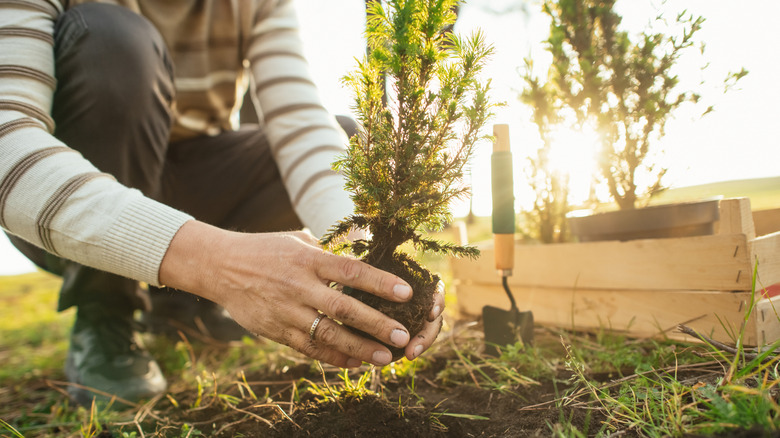Nemesis Planting - What It Is And Why You Should Be Wary Of It In Your Garden
It's not just humans that have enemies. It turns out plants can have nemeses, and the power struggle is one that can rage until the death of one or both. While it sounds dramatic (although not as dramatic as the fact that your plants literally scream), knowing that there are incompatible species will ensure you aren't wasting your time by planting them together. Searches for what is companion planting have popped up a lot in gardening sites on the Internet, but nemesis planting is actually very real due to a chemical some plants release which affects how nearby species grow (or don't grow, in this case).
The term allelopathic refers to this phenomenon, and is the science behind why you may want to keep certain greenery apart in your raised beds. Nemesis planting may not get a Netflix special any time soon as the drama would be very drawn out, but if you don't enjoy watching the demise of plants you worked hard to raise, avoid seeding certain plant pairs that shouldn't grow next to each other. Not only do these chemicals create an issue, but different species also carry diseases or pull in pests that other greenery can't handle. Stick with plants that work well together to avoid issues.
Check for plants with allelopathic behaviors
So which plants should you keep away from one another when adding to your raised garden beds? There are a few that research has shown exhibit the allelopathic gene, but studies are ongoing. For example, don't grow nightshades next to brassicas and keep fennel and walnuts away from basically any other plants you intend to grow. Herbs should not be added near beans or certain flowers like sunflowers, and strawberries do not like anything from the cabbage family. Dill is in agreement with strawberries on this one, preferring not to be a companion plant to cabbage variations. And while they may taste good together, onions should be planted away from legumes.
You can find extensive lists online of all the different flowering greenery you should raise separately, and this will help them thrive without causing you any stress. It may seem a little overwhelming, especially if you have a large vegetable or fruit patch, but this will ensure you get more out of each seed. When near one another, these plants will release the allelochemicals mentioned above, stopping one another or just one of the species from growing. They may also come to blows over water, soil nutrients, and various other elements they all need. It may not be a cinematic battle, but the losses still cost time and money, so make sure to research which plants will thrive and which are, well, enemies! Much like companion plants that should grow together, there are just some nemesis plants that should not, and why force them to?

